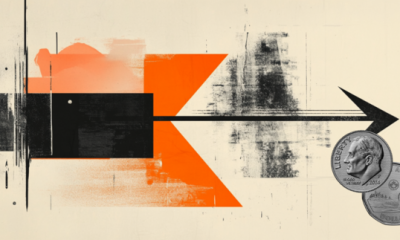

others
Japanese Yen being outpaced by the US Dollar after upbeat Retail Sales – Crypto News
- The Japanese Yen slides to 159.00 against the US Dollar on Tuesday.
- Fed Chairman Powell keeps his lips sealed on what the Fed will do next.
- The US Dollar Index holds in the 104.50 area and prints small gains on Tuesday.
The Japanese Yen (JPY) eases for a second day on Tuesday after the estimated 2.14 trillion Yen intervention from the Japanese Ministry of Finance last Thursday pushed the Yen from 162.00 to 157.00 against the US Dollar (USD) in just two days. However, the move is starting to fade and be pared back with the turn of events over the weekend, when former US President Donald Trump got shot during a political rally. The event panned out in favor of the former President, increasing his odds in the race towards the White House. Additionally, by picking Senator J.D. Vance as his running mate, Trump chose a firm believer in trade wars and protective policy to shield the domestic economy with even more tariffs than Trump issued back in 2018.
Meanwhile, the US Dollar Index (DXY) – which gauges the value of the US Dollar against a basket of six foreign currencies – is jumping higher for a second day in a row. Markets were a bit disappointed after Fed Chairman Jerome Powell refrained from commenting on any of the next or upcoming Financial Open Market Committee (FOMC) meetings. Traders would have loved to hear at least some clues about how the Chairman sees inflation pan out in the near future and what it would mean for rate cuts.
Daily digest market movers: US data that outperforms
- US retail sales has seen some decent numbers with all previous revisions being upbeat and showing a less diar situation when it comes to the US consumer buying things than previously expected.
- Reuters reports that Japan has spent nearly 2.14 trillion Yen on July 12th for its intervention, extracted from data coming from the Bank of Japan, Reuters reports.
- Bloomberg reports that several traders attribute the weaker Japanese Yen to market pricing in a potential Donald Trump win for the US presidential election.
- Mitsubishi UFJ Morgan Stanley Securities chief foreign-exchange strategist Daisaku Ueno issued a note that a “Trump trade” means a further strengthening of the US Dollar against the Yen (USD/JPY), with stocks and interest rates in the US set to outpace the Japanese ones.
- Japanese equities managed to eke out small gains on Tuesday and have closed off already with small gains locked in.
- The CME Fedwatch Tool shows an 89.4% chance of a 25 basis points (bps) interest rate cut by the Fed in September and 10.4% for a 50 bps cut. An unchanged scenario with no rate change is off the table.
- The Overnight indexed Swap curve for Japan shows a 43.7% chance of a rate hike on July 31 and a 35.9% chance for a hike on September 20.
- The US 10-year benchmark rate trades at the lower end of this week’s range near 4.17%.
- The benchmark 10-year Japan Treasury Note (JGB) trades around 1.02%, a fresh low for July.
USD/JPY Technical Analysis: All technical play
Taking a step back at the recent turn of events since this weekend, it looks like markets have switched views and look to be okay for a Trump win in November. This means rather bad news for the Japanese Yen as pressure will now build towards the US Presidential November elections and will see a stronger US Dollar the more Trump leads in the polls. Seeing the support the Japanese Yen received at 157.60, a return to 160.32 looks to be the next step in the coming weeks.
On the downside, the 55-day Simple Moving Average (SMA) near 157.58is working as support and triggered a bounce on Thursday and Friday last week. On the upside, 160.32 is the first pivotal significant level to look out for, where either a rejection could occur to push the JPY back to 157.58, or might break with another rally taking place towards 162.00.
USD/JPY Daily Chart
Inflation FAQs
Inflation measures the rise in the price of a representative basket of goods and services. Headline inflation is usually expressed as a percentage change on a month-on-month (MoM) and year-on-year (YoY) basis. Core inflation excludes more volatile elements such as food and fuel which can fluctuate because of geopolitical and seasonal factors. Core inflation is the figure economists focus on and is the level targeted by central banks, which are mandated to keep inflation at a manageable level, usually around 2%.
The Consumer Price Index (CPI) measures the change in prices of a basket of goods and services over a period of time. It is usually expressed as a percentage change on a month-on-month (MoM) and year-on-year (YoY) basis. Core CPI is the figure targeted by central banks as it excludes volatile food and fuel inputs. When Core CPI rises above 2% it usually results in higher interest rates and vice versa when it falls below 2%. Since higher interest rates are positive for a currency, higher inflation usually results in a stronger currency. The opposite is true when inflation falls.
Although it may seem counter-intuitive, high inflation in a country pushes up the value of its currency and vice versa for lower inflation. This is because the central bank will normally raise interest rates to combat the higher inflation, which attract more global capital inflows from investors looking for a lucrative place to park their money.
Formerly, Gold was the asset investors turned to in times of high inflation because it preserved its value, and whilst investors will often still buy Gold for its safe-haven properties in times of extreme market turmoil, this is not the case most of the time. This is because when inflation is high, central banks will put up interest rates to combat it. Higher interest rates are negative for Gold because they increase the opportunity-cost of holding Gold vis-a-vis an interest-bearing asset or placing the money in a cash deposit account. On the flipside, lower inflation tends to be positive for Gold as it brings interest rates down, making the bright metal a more viable investment alternative.
-

 Technology1 week ago
Technology1 week agoSam Altman says OpenAI is developing a ‘legitimate AI researcher’ by 2028 that can discover new science on its own – Crypto News
-

 Technology1 week ago
Technology1 week agoBenQ MA270U review: A 4K monitor that actually gets MacBook users right – Crypto News
-

 Technology1 week ago
Technology1 week agoGiving Nvidias Blackwell chip to China would slash USs AI advantage, experts say – Crypto News
-
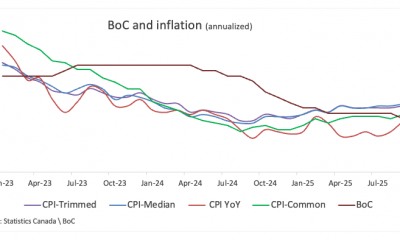
 others1 week ago
others1 week agoBank of Canada set to cut interest rate for second consecutive meeting – Crypto News
-

 De-fi1 week ago
De-fi1 week agoBittensor Rallies Ahead of First TAO Halving – Crypto News
-

 Business1 week ago
Business1 week agoStarbucks Says Turnaround Strategy Drives Growth in Global Sales – Crypto News
-

 Blockchain1 week ago
Blockchain1 week agoSolana Eyes $210 Before Its Next Major Move—Uptrend Or Fakeout Ahead? – Crypto News
-

 De-fi1 week ago
De-fi1 week agoREP Jumps 50% in a Week as Dev Gets Community Support for Augur Fork – Crypto News
-

 others7 days ago
others7 days agoMETA stock has lower gaps to fill – Crypto News
-

 De-fi1 week ago
De-fi1 week agoCrypto Market Edges Lower While US Stocks Hit New Highs – Crypto News
-
others1 week ago
Pi Coin Gains Another 15% As Pi Network Joins ISO 20022 For Seamless Banking Integration – Crypto News
-

 Cryptocurrency3 days ago
Cryptocurrency3 days agoAndrew Tate Buys $5 Million Worth of Bitcoin Hours Before Crash – Crypto News
-
Cryptocurrency6 days ago
After 1,993% Burn Spike, Is Shiba Inu Price Set for a Major Trend Reversal? – Crypto News
-
others1 week ago
Crypto Market Tumbles as Jerome Powell Says December Rate Cut ‘Far From Certain’ – Crypto News
-

 De-fi1 week ago
De-fi1 week agoBitcoin Dips Under $110,000 After Fed Cuts Rates – Crypto News
-
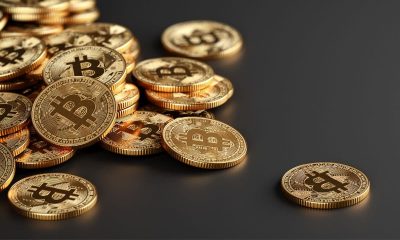
 Cryptocurrency2 days ago
Cryptocurrency2 days agoMany Crypto Treasury Companies Were a Get-Rich-Quick Trap, Warns Columbia Professor – Crypto News
-

 De-fi1 week ago
De-fi1 week agoTokenized Nasdaq Futures Enter Top 10 by Volume on Hyperliquid – Crypto News
-
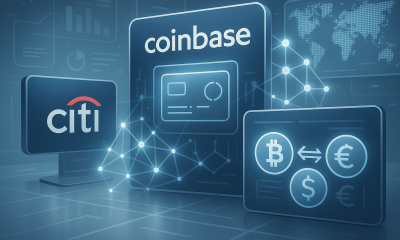
 Cryptocurrency1 week ago
Cryptocurrency1 week agoCitigroup and Coinbase partner to expand digital-asset payment capabilities – Crypto News
-

 De-fi1 week ago
De-fi1 week agoCRO Jumps After Trump’s Truth Social Announces Prediction Market Partnership with Crypto.Com – Crypto News
-
others1 week ago
Can ASTER Price Rebound 50% as Whale Activity and Bullish Pattern Align? – Crypto News
-

 Blockchain7 days ago
Blockchain7 days agoSmart Money Buys the Dip – Crypto News
-
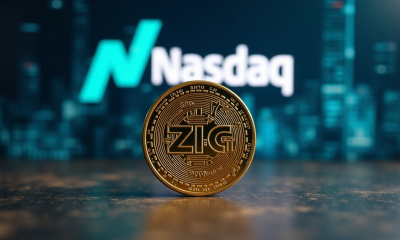
 Cryptocurrency6 days ago
Cryptocurrency6 days agoZIGChain eyes gains as Nasdaq-Listed SEGG Media backs ZIG – Crypto News
-

 Cryptocurrency3 days ago
Cryptocurrency3 days agoAndrew Tate Buys $5 Million Worth of Bitcoin Hours Before Crash – Crypto News
-
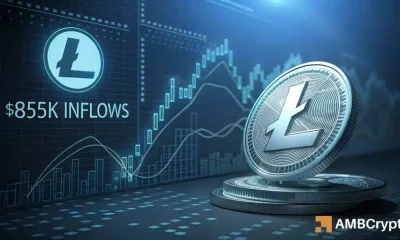
 Cryptocurrency3 days ago
Cryptocurrency3 days agoLitecoin: $855K ETF inflow sparks new life – Next target is $105 IF… – Crypto News
-
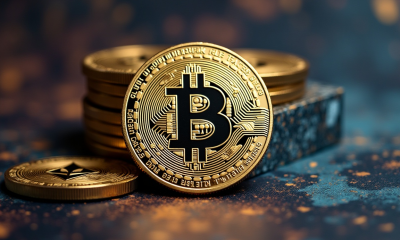
 Cryptocurrency2 days ago
Cryptocurrency2 days agoBitcoin tests $100K support after massive liquidation event rocks market – Crypto News
-
others1 week ago
Pi Network Patterns Point to More Gains Despite Manipulation Claims – Crypto News
-
Technology1 week ago
Breaking: $2.6B Western Union Announces Plans for Solana-Powered Stablecoin by 2026 – Crypto News
-
Business1 week ago
BNB Chain’s Future Growth Won’t Come From DEXs – Crypto News
-

 Cryptocurrency1 week ago
Cryptocurrency1 week agoInside Bitwise’s milestone solana ETF launch – Crypto News
-

 Cryptocurrency1 week ago
Cryptocurrency1 week agoWhy Is Pi Network’s (PI) Price Up by Double Digits Today? – Crypto News
-

 Blockchain1 week ago
Blockchain1 week agoCZ Weighing Lawsuit Against US Senator over Money Laundering Claim: Report – Crypto News
-

 Blockchain1 week ago
Blockchain1 week agoBasel Reportedly Aims for Friendlier Crypto Bank Guidelines – Crypto News
-
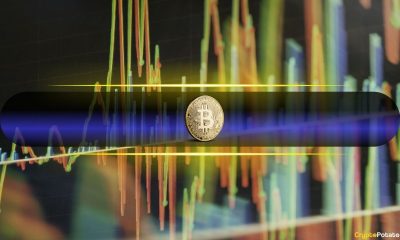
 Cryptocurrency7 days ago
Cryptocurrency7 days agoIs the Market Finally Learning to Handle Volatility? – Crypto News
-

 Metaverse6 days ago
Metaverse6 days agoAI boom is just beginning – Nvidia CEO Jensen Huang explains what’s driving the virtuous cycle – Crypto News
-
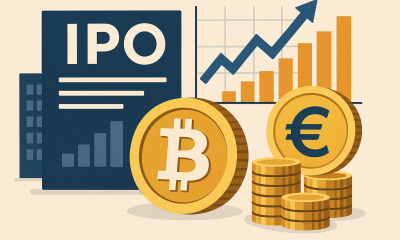
 Cryptocurrency2 days ago
Cryptocurrency2 days agoStrategy IPO redefines corporate Bitcoin strategy with euro-denominated offering – Crypto News
-

 Cryptocurrency1 week ago
Cryptocurrency1 week agoKERNEL price goes vertical on Upbit listing, hits $0.23 – Crypto News
-

 Blockchain1 week ago
Blockchain1 week agoVisa To Support Four Stablecoins on Four Blockchains – Crypto News
-

 Cryptocurrency1 week ago
Cryptocurrency1 week agoArbitrum beats Ethereum in inflows: Yet ARB price lags – Here’s why – Crypto News
-

 Technology1 week ago
Technology1 week agoEthereum Foundation launches institutional portal to boost enterprise adoption – Crypto News
-
Business1 week ago
Bitcoin Price Forecast as Trump Cuts Tariffs After US-China Trade Deal – Crypto News
-
Technology1 week ago
XRP Price Outlook as ETF Nears Possible November 13 Launch – Crypto News
-
Business1 week ago
Not L1s or Wallets – Who Generates the Bulk of Crypto’s $20B in Revenue? – Crypto News
-
others6 days ago
Pi Coin Price Prediction After AI Investment Announcement – Is a Bull Run Ahead? – Crypto News
-
Technology1 week ago
Breaking: $2.6B Western Union Announces Plans for Solana-Powered Stablecoin by 2026 – Crypto News
-
others1 week ago
When liquidity becomes the new frontier – Crypto News
-
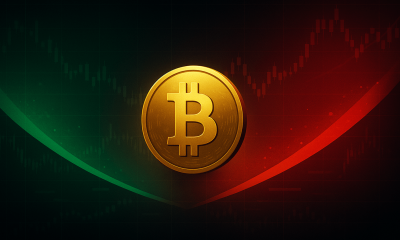
 Blockchain1 week ago
Blockchain1 week agoBitcoin Cost Basis Map Reveals Key War Zone Between Bulls & Bears – Crypto News
-
others1 week ago
Cardano Price Risks 20% Crash Amid Death Cross and Falling ADA ETF Odds – Crypto News
-
Technology1 week ago
Canary XRP ETF Filing Removes SEC Delay Clause, Targets November Launch – Crypto News
-
others6 days ago
Russia S&P Global Manufacturing PMI dipped from previous 48.2 to 48 in October – Crypto News
-

 Cryptocurrency6 days ago
Cryptocurrency6 days agoHBAR under pressure, Descending channel hints at 24% downside move – Crypto News



